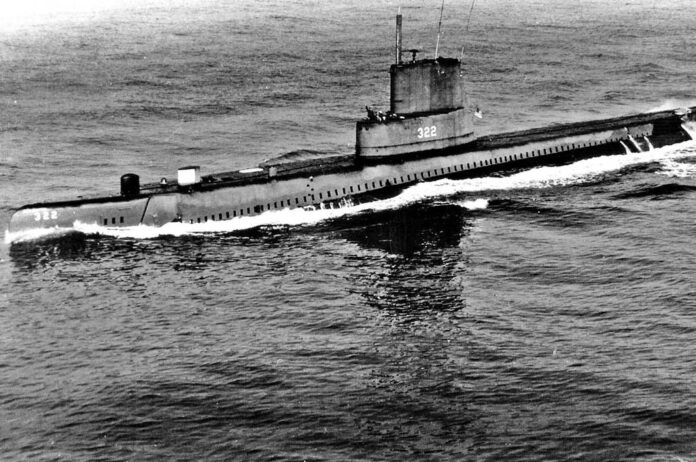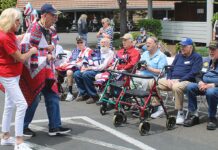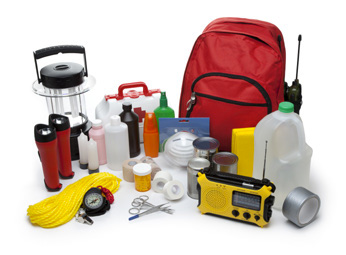American naval submarine forces had a largely unheralded but significant impact towards winning the war in the Pacific against Japan in World War II. Tualatin resident Albert “Monty” Montague, a Pearl Harbor survivor, was one of the crewmembers on the relatively small number of “boats“ that sank 55% of Japan’s naval and merchant marine forces during the war. In the Navy, “boat” is a favorite term for a submarine to distinguish it from a surface ship. Also, naval vessels are referred to in feminine terms.
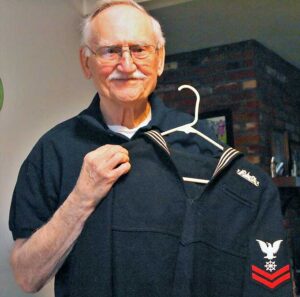
With nearly 1600 war patrols over a five year period, US submarines sank more than a thousand merchant ships. They also claimed one battleship, eight aircraft carriers, three heavy cruisers and eight light cruisers. Merchant ships brought in raw materials like imported oil, rubber, iron ore, foodstuffs, and other critical natural resource supplies for Japan’s war industries and growing population. They carried out fuel, weapons, ammunition, planes and troops to the war. Without these critical ship cargos, manufacturing ceased, allowing no gas for vehicles causing an economic collapse throughout that island empire.
In the December 2012 edition of Tualatin Life, this column recounted Monty’s heroic Pearl Harbor rigors. He had just completed boot camp and arrived in Hawaii at Pearl Harbor Navy Base a few days before the attack began. He actively helped defend against the Japanese planes. Then after assisting in recovery efforts of sailors from disabled ships in Pearl Harbor, he was assigned to a work crew at adjacent Hickam (Army Air Corps) Airfield.
Monty’s tales of his five years of colorful and, at times, dangerous Navy life – in Hawaii, on sub patrol, and in Australia – could fill a bestselling novel. On his first patrol, his submarine, Stingray laid mines in the bay of Wenchow, China. While there, a Japanese convoy headed toward the mine field, Monty went to his battle station, as helmsman. With the Stingray moving at flank (maximum) speed, he turned the helm over ” hard left” as a torpedo was sent off at Tamon Maru, an 8,156 ton cargo ship . Monty said “We fired one torpedo up his rear end. He disappeared in about 41 seconds.” Later, large explosions were heard for 20 minutes, as the convoy apparently ran into the mine field.
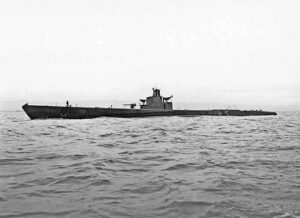
The next patrol had Stingray delivering 45 tons of arms, ammunition and food supplies to Philippine guerrillas. One whole village came out in small canoes, transferring their supplies in four hours. Monty said “We made ham sandwiches for them, but they took the ham out and ate the bread. Evidentially they were Muslins.” The head man told our Captain that “when they captured any Japanese they would get all the information out of them, and then behead them because they had no prison to put them.”
When leaving Pearl Harbor, submarines were normally accompanied by a destroyer to provide protection against friendly fire. It was difficult to determine whether a submarine was friend or foe while transiting in the ocean; so all subs moved on the alert. The Stingray was damaged by four bombs mistakenly dropped by a friendly plane when traveling from Brisbane, Australia to Pearl Harbor on her ninth war patrol. The Stingray surfaced to repair the damage after the plane left the area.
On 30 March 1944, Stingray, while on her tenth war patrol conducted in the Mariana Islands, slipped past three escorts (Japanese warships) to get in position to fire torpedoes at two merchant ships. She got off four torpedoes at the lead ship, Ikushima Maru. One hit amidships, stopping it dead in the water. Stingray then quickly fired four more torpedoes that sank the damaged cargo ship.
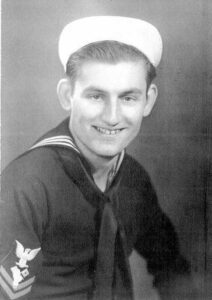
Later on that patrol, Monty earned a commendation for his quick action while on lookout duties early in the morning. He reported seeing an approaching torpedo, running shallow and broaching. With that, Stingray turned, successfully avoiding the torpedo. Ten seconds later, Monty reported another wake. The first torpedo passed ahead by about 100 feet and the second went by on the starboard (right) side. Monty explained that the reason the second torpedo missed was because Stingray “was following an anti-night flying plane measure in the bright moon light, zigging back and forth at ten knots with a 5 degree rudder.”
Stingray’s 11th patrol was as lifeguard station for air strikes on Guam. On June 11, the sub rescued a downed Navy pilot and the following day, pulled two crewmen from the water. Two days later, they learned a Navy airman was in the water, about 500 yards from shore. After four submerged approaches, braving firing from shore batteries, the pilot grabbed the periscope, and was towed clear of the island and taken on board.
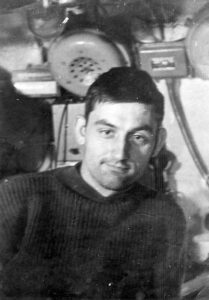
Radio contact was lost with the Stingray on one patrol. That usually meant the sub had been sunk. So all the crew’s personal belongings (seabags) being held in Hawaii were sent stateside to their families.
On the 12th patrol, Stingray landed 15 Filipino commandos and six tons of supplies on the northeastern coast of Luzon. On the way back to Australia, they picked up four Japanese sailors from a sunken cruiser. Monty said the officer could read English but not speak it. They were very hungry and ate an enormous amount of food. They were given to Australian authorities for interrogation.
Although outraged by the atrocities committed during the war, Monty says he never hated the Japanese, partly because a third of his high school classmates in California were Japanese. But after the surprise attack on Pearl Harbor, Monty and his submarine crewmates were serious about winning the war against the enemy.
The Stingray was involved in special missions for the remainder of the war, some of which have been recently declassified. The Stingray received twelve battle stars for WW II service. She holds the record for the most war patrols – 16 – of any American submarine.
Monty joined the Navy with two buddies on August 20, 1941. They went through boot camp together and volunteered for submarine duty, all three arriving at Pearl Harbor on December 1, 1941. After submarine training, each was assigned to a separate sub. Monty was discharged on Dec 23. 1946. His two friends are still on patrol in the Pacific.

